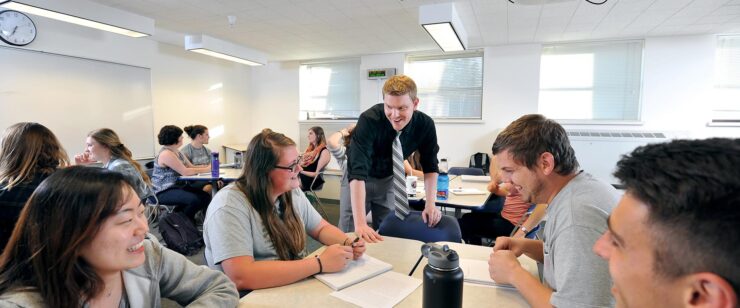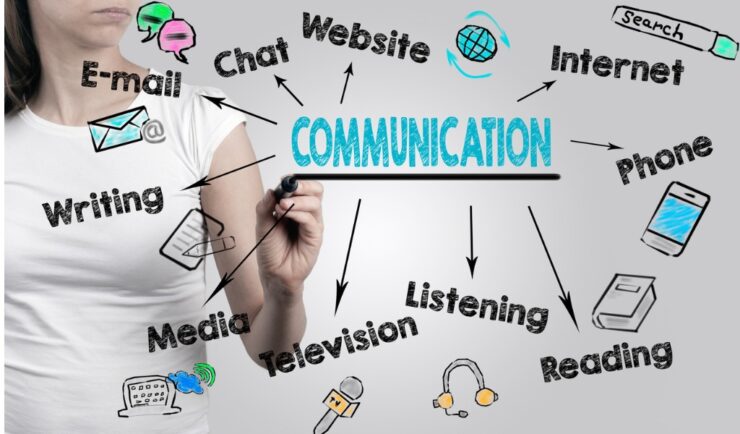Table of Contents
Communication today is about much more than just transmitting information – it requires systematically reaching key audiences and shaping opinions. With the explosion of media channels and 24/7 information, simply relaying messages is no longer enough. Organizations and individuals must communicate strategically if they want to be heard and shape opinions amidst the clutter. This requires going beyond one-size-fits-all messaging to tailored narratives that resonate with each target audience.
Why Study Strategic Communication?

Studying strategic communication provides the knowledge and explores how to ethically inform, motivate, and persuade key groups using data-driven insights, compelling content, and relationship-building. A strategic, audience-focused approach allows organizations to achieve objectives from driving sales to sparking activism.
Classes offer hands-on practice with research, analytics, messaging tactics, and relationship management. Students gain expertise in crafting narratives and engagement strategies designed to influence behaviors in the modern communication environment. By graduating with this versatile degree, students will have a competitive edge and the ability to create change as strategic communicators.
Let’s explore the ten benefits of studying strategic communication in detail:
1. Gaining a Competitive Edge
The specialized knowledge and skills gained from a strategic communication education give graduates a competitive edge in the job market. For those seeking a comprehensive and flexible learning route, pursuing a B.A. in strategic communication online offers the convenience of digital learning paired with rigorous curriculum standards. Employers in all industries need talent to strategically manage messaging and shape narratives. This degree equips students to excel in our complex, ever-evolving media landscape.
Coursework covers communicating ethically and effectively across print, digital, social, and interpersonal channels. Graduates will have the strategic expertise to create change and cut through the noise. Professionals thrive in roles ranging from public relations to marketing, journalism, advocacy, and beyond. A strategic communication education prepares students to advance organizational and social interests in our hyper-connected world.
2. Leveraging Data Analytics

Data analytics enable communicators to gauge message impacts and systematically fine-tune approaches for optimal results. Classes explore tools like social listening, web analytics, CRM metrics, and media monitoring to quantify channel engagement. For example, they may track opens, clicks, shares, comments, mentions, and conversions sparked by a campaign. Students learn to comb through data to identify trends, gain insights, and measure what resonates.
This feedback loop allows students to refine communication plans to increase relevance and effectiveness continually. Data reveals how messages spread through social networks. It also shows whether segments are interacting with content. Analytics takes the guesswork out of communication by grounding it in scientific measurement. Students come away with the ability to interpret data, derive strategic insights, and clearly convey analytics findings to guide strategy.
3. Crafting Compelling Messages
Impactful messaging sits at the heart of strategic communication. Classes provide hands-on practice with timeless principles and techniques for crafting compelling content. This involves defining objectives, understanding audiences, brainstorming creative concepts, writing powerful copy, integrating visuals, and testing messages. Students learn how to develop content that informs, entertains, inspires, and persuades target groups across mediums ranging from speeches to blog posts to social media advertisements.
Conveying complex ideas simply and creatively takes practice. Courses build skills for organizing information and turning it into a story that resonates emotionally. Students gain experience writing in different tones and styles suited to the medium and audience. Great communication comes down to focus, brevity, clarity, and creativity. Classes teach how to grab attention, spark interest, create desire, and drive action. With these evidence-based message development skills, students can effectively reach target audiences.
4. Selecting Optimal Channels

Strategic communication education explores both emerging and traditional channels ranging from social platforms to grassroots mobilizing. Students learn how to dissect campaign objectives and audiences to determine optimal conduits. For example, LinkedIn may work well for a B2B campaign targeted to IT managers, while TikTok suits a youth-focused effort.
Classes also cover how to sequence messages across channels to maximize exposure. Students learn to capitalize on channel strengths while mitigating weaknesses. Orchestrating an integrated cross-channel approach ensures messages cut through the clutter to penetrate audiences.
5. Building Thought Leadership
Thought leadership involves establishing expertise and trust on issues to expand influence. Courses illustrate how to leverage owned platforms, from company blogs to webinars, to position brands or executives as go-to authorities in their niche. Students learn to identify power vacuums in conversations and create content that provides unique value to fill gaps. This content shares insights and educates and guides target audiences.
Strategically cultivating thought leadership also involves monitoring conversations to identify influencers, engage with contributors, and share their content. Students gain skills for building authority by consistently producing high-quality, helpful material centered around their perspective.
6. Managing Organizational Reputation

A company or brand’s reputation is its most important asset. Courses explain how strategic communication safeguards reputations through proactive and reactive efforts. On the proactive side, students learn how to build goodwill and trust through strong values, community involvement, and consistent messaging. Reactive tactics include crisis management, robust media relations, and online brand monitoring.
Students explore how to anticipate and prepare for different crisis scenarios. When issues arise, the focus shifts to minimizing damage through timely, transparent communication. Beyond mitigating risks, reputation management aims to build resilience and goodwill to bounce back. These lessons are invaluable for protecting brand equity and organizational interests. By managing reputations strategically, organizations can silence critics and come out stronger.
7. Leading Change Initiatives
Implementing change is difficult, and strategic communication is key for driving change in organizations and society. Classes examine how influential leaders throughout history have rallied people around a vision for the future. This involves using storytelling and symbolism to make the vision tangible. Students learn how to paint a compelling picture of the future state to foster buy-in.
Courses also cover communication strategies to overcome resistance. This includes addressing concerns, emphasizing benefits, and reinforcing self-interest. Framing change as a journey helps people understand their role. Students learn to use small wins to build momentum while celebrating milestones. Ongoing communication should create urgency around the need for change while providing reassurance through transparency.
Conclusion
In an interconnected world where perceptions matter more than ever, studying strategic communication equips students to ethically inform, motivate, and persuade target audiences across print, digital, and interpersonal channels. By learning audience psychology, data analytics, messaging tactics, and relationship management, graduates will have the strategic skills to create change and succeed in the dynamic communication environment. The rise of social media and the proliferation of information makes strategic communication essential for anyone wanting to connect, engage, and shape opinions effectively.

